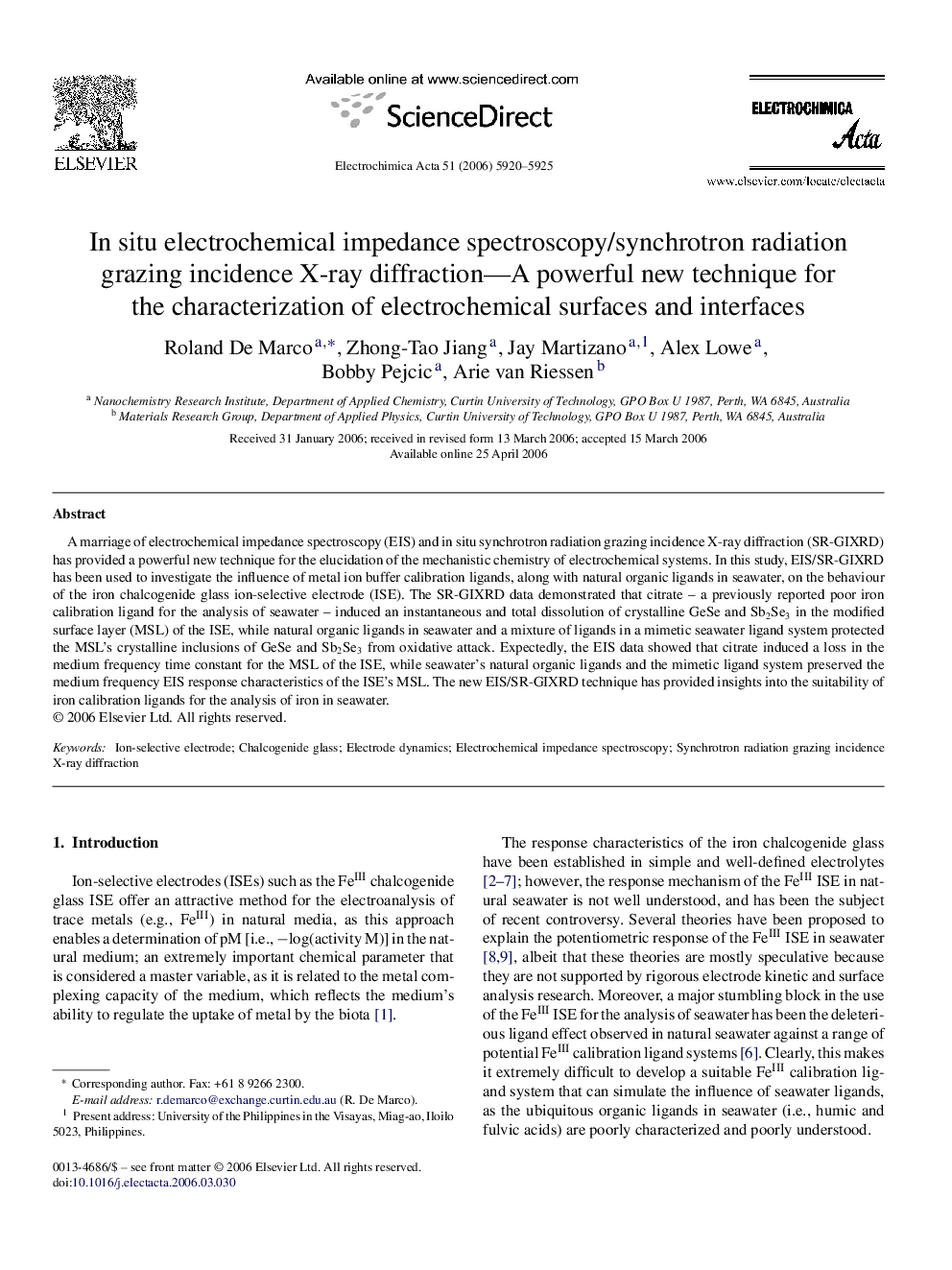| Article ID | Journal | Published Year | Pages | File Type |
|---|---|---|---|---|
| 194683 | Electrochimica Acta | 2006 | 6 Pages |
A marriage of electrochemical impedance spectroscopy (EIS) and in situ synchrotron radiation grazing incidence X-ray diffraction (SR-GIXRD) has provided a powerful new technique for the elucidation of the mechanistic chemistry of electrochemical systems. In this study, EIS/SR-GIXRD has been used to investigate the influence of metal ion buffer calibration ligands, along with natural organic ligands in seawater, on the behaviour of the iron chalcogenide glass ion-selective electrode (ISE). The SR-GIXRD data demonstrated that citrate – a previously reported poor iron calibration ligand for the analysis of seawater – induced an instantaneous and total dissolution of crystalline GeSe and Sb2Se3 in the modified surface layer (MSL) of the ISE, while natural organic ligands in seawater and a mixture of ligands in a mimetic seawater ligand system protected the MSL's crystalline inclusions of GeSe and Sb2Se3 from oxidative attack. Expectedly, the EIS data showed that citrate induced a loss in the medium frequency time constant for the MSL of the ISE, while seawater's natural organic ligands and the mimetic ligand system preserved the medium frequency EIS response characteristics of the ISE's MSL. The new EIS/SR-GIXRD technique has provided insights into the suitability of iron calibration ligands for the analysis of iron in seawater.
